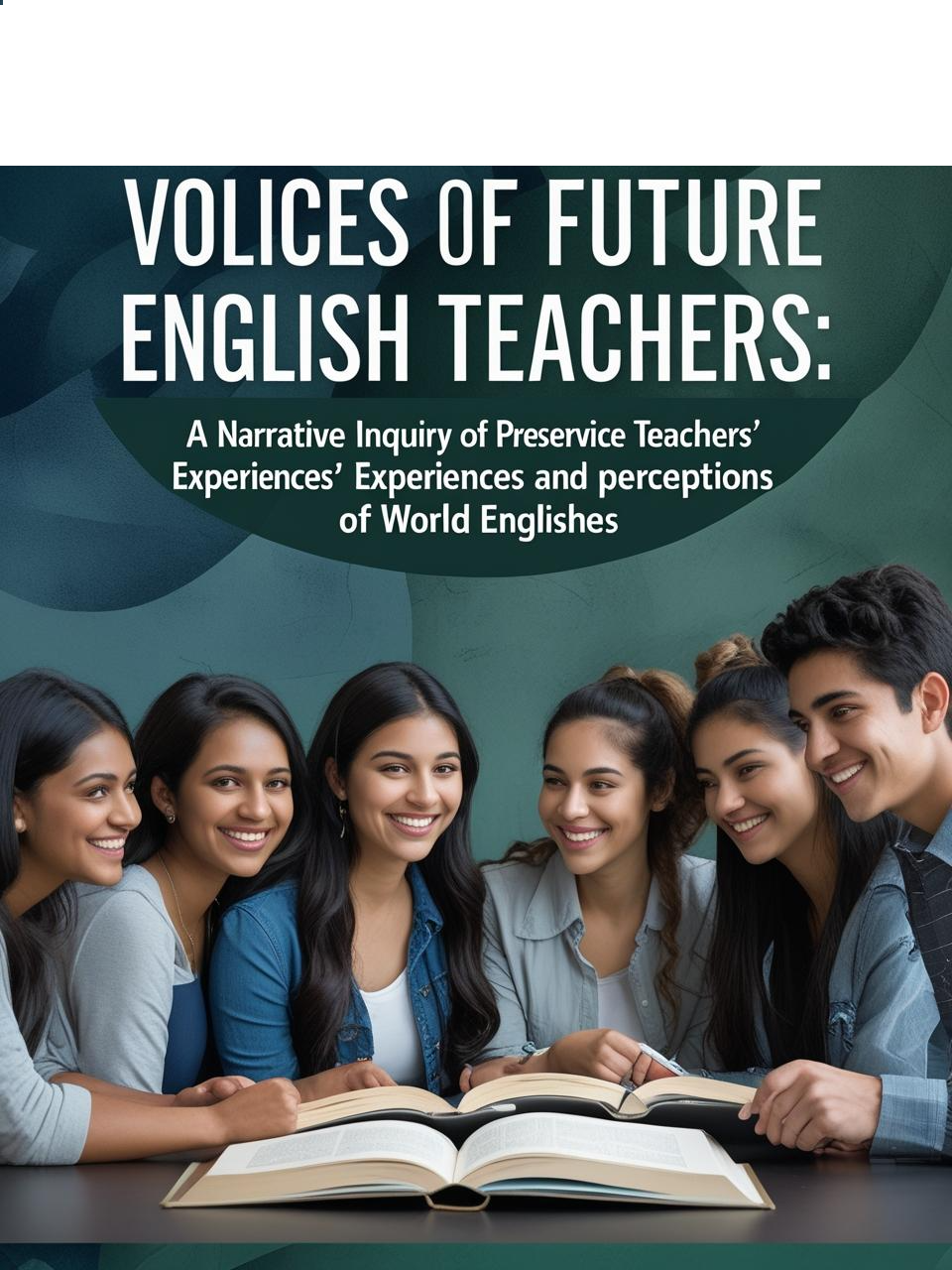Voices of Future English Teachers: A Narrative Inquiry of Preservice Teachers' Experiences and Perceptions of World Englishes
DOI:
https://doi.org/10.24903/bej.v7i2.2118Keywords:
World Englishes, Experiences, Perceptions, Preservice English TeachersAbstract
This study examines how pre-service English teachers' life experiences, beliefs, and identity conflicts influence their perceptions and understandings of World Englishes (WE). Using a qualitative method with a narrative inquiry approach, this study used interviews and reflective journals from four sixth-semester students of an English education program at one of the religiously based private universities in East Kalimantan. The findings were that WE understanding developed through exposure to media and personal experiences, as well as language skills courses. These pre-service English teachers perceived that WE is important for students and has a positive impact on students' language skills. Despite challenges, the pre-service English teachers were committed to creating an inclusive learning environment and valued the diversity of the English language. This research suggests further exploration of how World Englishes influence teachers' teaching practices.
References
Aminah, S., Nur, D. R., & Ariyanti, A. (2019). An Analysis of Teacher Talk used by English Teacher at SMKN 5 Samarinda. Borneo Educational Journal (Borju), 1(1), 22–28. https://doi.org/10.24903/bej.v1i1.256
Arbain, A., & Nur, D. R. (2017). Techniques for teaching speaking skill in Widya Gama Mahakam University. Script Journal: Journal of Linguistics and English Teaching, 2(1), 13–25. https://doi.org/10.24903/sj.v2i1.80
Arbain, A., & Rohman, A. (2023). Dubbing as a Pedagogical Tool: An Experimental Study on Eleventh-Grade Students at SMAN 8 Samarinda. EDUCASIA: Jurnal Pendidikan, Pengajaran, Dan Pembelajaran, 8(2), 147–156. https://doi.org/10.21462/educasia.v8i2.155
Arbain, A., Taufik, A., & Nur, D. R. (2017). Daily English Phrases Book. UWGM Press.
Ates, B., Eslami, Z. R., & Wright, K. L. (2015). Incorporating world Englishes into undergraduate ESL education courses. World Englishes. https://doi.org/10.1111/weng.12149
Borg, S. (2003). Teacher cognition in language teaching : A review of research on what language teachers think , know , believe , and do. 81–109. https://doi.org/10.1017/S0261444803001903
Canagarajah, S. (2005). Critical Pedagogy in L2 Learning and Teaching. In Handbook of Research in Second Language Teaching and Learning (p. 19).
Connelly, F. M., & Clandinin, D. J. (2012). Narrative Inquiry. In Handbook of Complementary Methods in Education Research (p. 11). https://doi.org/https://doi.org/10.4324/9780203874769
Crystal, D. (2001). A Dictionary of Language (Second). The University of Chicago Press.
Crystal, D. (2003). English as a Global Language. Cambridge University Press.
Erliana, U., & Arbain, A. (2020). The Effectiveness of Using Video Clip in Teaching English Vocabulary at SD Fastabiqul Khairat Samarinda. IJOTL-TL: Indonesian Journal of Language Teaching and Linguistics, 5(2), 123–134. https://doi.org/10.30957/ijoltl.v5i2.623
Fidan, C., Mourchid, M., & Bouaisanne, M. (2024). Focus on ELT Journal Attitudes toward World Englishes and World Englishes-informed pedagogies among prospective ELT t eachers in Türkiye. 6(3).
Galloway, N., & Rose, H. (2018). Incorporating Global Englishes into the ELT classroom. ELT Journal, 72(1), 3–14. https://doi.org/10.1093/elt/ccx010
Gergen, J. K. (2009). Relational Being: Beyond Self and Community. Oxford University Press.
Good, T., & Brophy, J. (1994). Looking In Classrooms.
Gracella, J., & Rahman Nur, D. (2020). Students’ Perception of English Learning through YouTube Application. Borneo Educational Journal (Borju), 2(1), 20–35. https://doi.org/10.24903/bej.v2i1.623
Jenkins, J. (2009). English as a lingua franca : interpretations and attitudes. World Englihses, 28(2), 200–207.
Kachru, B. B. (1985). The Bilingual’s Creativity. In Annual Review of Applied Linguistics (pp. 20–33). Cambridge University Press. https://doi.org/https://doi.org/10.1017/S0267190500003032
Kesumadewi, D. A., Agung, G. A. A., & Rati, N. W. (2020). Model Pembelajaran CIRC Berbantuan Media Cerita Bergambar Meningkatkan Hasil Belajar Bahasa Indonesia Siswa SD. MIMBAR PGSD Undiksha, 8(2), 303–314.
Kirkpatrick, A. (2010). English as an Lingua Franca in ASEAN: A Multilingual Model. Hong Kong University Press.
Matsuda, A. (2012). Principles and Practices of Teaching English as an International Language. Multilingual Matters.
Nasution, S. (1995). Didaktik Asas-Asas Mengajar.
Rahman, R. (2018). Keterampilan Guru Abad 21 Dalam Variabel Penguasaan Media Audio Visual. 1, 1–6.
Nur, D. R. (2020). Virtual Reality adoption in Indonesia higher Education from lecturer’s voice. English Teaching Journal: A Journal of English Literature, Language and Education, 8(1), 31–35. https://doi.org/10.25273/etj.v8i1.6672
Nur, D. R., & Jamilah, J. (2022). English Language Imperative Level in Indonesia. Intensive Journal, 5(1), 36–43. http://dx.doi.org/10.31602/intensive.v5i1.5986
Seidlhofer, B. (2011). Conceptualizing “English” for a Multilingual Europe. De Gruyter Bill. https://www.degruyterbrill.com/document/doi/10.1075/aals.8.09sei/html
Walker, R. (2022). Teaching The Pronunciation of English As A Lingua Franca. Oxford University Press.

Downloads
Published
How to Cite
Issue
Section
License
Copyright (c) 2025 Nurdayanti Buton, Ibrahim Ibrahim, Ade Ismail Ramadhan Hamid

This work is licensed under a Creative Commons Attribution 4.0 International License.
Authors retain copyright and grant the journal right of first publication with the work simultaneously licensed under a Creative Commons Attribution 4.0 International License that allows others to share the work with an acknowledgment of the work's authorship and initial publication in this journal.



